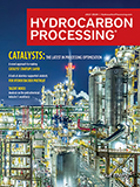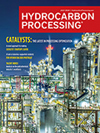Asia to get 1.7 mln T naphtha from West, but more cargoes needed
SINGAPORE (Reuters) - Asia is expected to receive up to 1.7 million tonnes of naphtha from the West, including Europe, the Mediterranean and the United States in January, which is more than 6% higher versus 2019's monthly average, industry sources said on Friday.
But low supplies from the Middle East, which is the largest naphtha supplier to Asia, will keep a supply crunch going for a while more, they added.
According to data from Refinitiv's Oil Research Team, up to 2.3 million tonnes of naphtha are expected in Asia from the Middle East, down from a monthly average of close to 2.5 million tonnes in 2019.
"We probably are still short of some 300,000 tonnes of naphtha next month," said one of the sources who tracks eastbound cargoes.
The supply crunch has persisted since September, when drone attacks hit Saudi oilfields.
That prompted Saudi oil giant Aramco to snap up available spot cargoes to meet customers' needs.
Refinery maintenance in the Middle East in the fourth quarter including facilities in Qatar and Saudi Arabia, and an upcoming turnaround in the United Arab Emirates added to the supply woes, industry sources said.
These factors have driven naphtha premiums to multi-year highs and crack spreads (the premiums of refining a barrel of Brent crude into naphtha) to a two-year high.
Asia's naphtha crack was near a two-year high on Thursday at $124.60 a tonne but fell on Friday to a five-session low of $116.15 a tonne. <NAF-SIN-CRK>.
That still contrasted with the situation in June when the value turned negative for the first time in a decade.
"Naphtha was extremely bearish for a long time but it's now overheated and petrochemical margins are so squeezed that makers are contemplating cracker run cuts," said a Singapore-based source.
Naphtha is a feedstock for plastics. The latter's prices typically have to be $400 to $450 above naphtha to reach a break-even point.
At present, plastics are sold between $800 and $900 a tonne on a cost-and-freight (C&F) Southeast Asia basis, depending on the grades, while naphtha is over $600 a tonne.
"It's getting harder to keep crackers running at maximum mode given the naphtha prices," said a North Asian source, echoing the view of many other buyers.






Comments